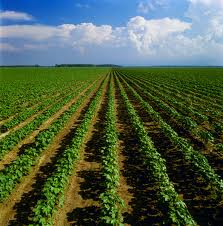There’s unquestionably an art to farming, but how about farming as an museum exhibit?
I f that sounds a little odd, you were not a judge in the Emily Hall Tremaine Foundation’s biennial exhibition awards. Three 2010 winners were announced on Sept. 1, and $150,000 will go to an independent curator named Sue Spaid. Her exhibit, Green Acres: Artists Farming Fields, Greenhouses and Abandoned Lots will run at the Contemporary Arts Center in Cincinnati, Ohio, in September, 2012 — if all goes well. Here’s the description:
f that sounds a little odd, you were not a judge in the Emily Hall Tremaine Foundation’s biennial exhibition awards. Three 2010 winners were announced on Sept. 1, and $150,000 will go to an independent curator named Sue Spaid. Her exhibit, Green Acres: Artists Farming Fields, Greenhouses and Abandoned Lots will run at the Contemporary Arts Center in Cincinnati, Ohio, in September, 2012 — if all goes well. Here’s the description:
Green Acres aims to be the first museum exhibition solely devoted to the cultivation and distribution of edible foodstuffs. [It] will explore a global art movement that has been developing over the past 40 years wherein artists have developed and realized novel farming practices to inspire self-reliance, improve food quality, demonstrate sustainable farming techniques, engender community actions and foster local identities. These acts — whether of resistance, empowerment and/or genuine pleasure on the part of artists and participants alike — offer viable alternatives to the standard corporate farms upon which we depend. Green Acres combines an indoor exhibition of historically significant works, including the refabrication of Newton and Helen Harrison’s Survival Series (1970-1973), a completely functioning indoor farm, a photography installation and live video feeds to farm-as-art projects in New York, Thailand and Israel, as well as six on site outdoor sculptures.
 Maybe you have to see it to decide if it’s museum-worthy. But Spaid has her work cut out to persuade me.
Maybe you have to see it to decide if it’s museum-worthy. But Spaid has her work cut out to persuade me.
The Tremaine award “rewards innovation and experimentation at the curatorial level by supporting strong thematic exhibitions that challenge audiences and expand the boundaries of contemporary art.” Environment, along with art and learning disabilities, is one of the foundation’s program areas, so Green Acres provides a measure of synergy, I suppose. (See the award’s eligibility rules and goals here.)
But to me, this is a stretch, part of the museum as town-hall/art-isn’t-necessarily-central trend. And it’s sad.
Tremaine gave two other exhibition awards: Steven Matijcio, Curator of Contemporary Art at the Southeastern Center for Contemporary Art in Winston-Salem, was awarded $85,000 for Paperless, which will showcase artists “wrestling with the implication of paper as artifact.”
And João Ribas, Curator at the MIT List Visual Arts Center in Cambridge, was awarded $150,000 for Man in the Holocene, which “will explore how contemporary art acts as a speculative science of objects and phenomena… as a form of inquiry into how we perceive and configure our physical world.”
